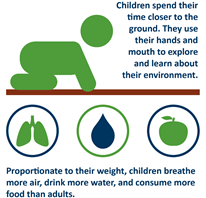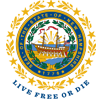Children’s Environmental Health
The New Hampshire Environmental Public Health Tracking Program is using data to understand children’s exposures to contaminants and providing resources to help community health professionals and families reduce exposure.
The NH Tracking Program makes connections between health and the environment by collecting and analyzing environmental public health data to inform actions to protect and improve health. Children’s Environmental Health (CEH) focuses on our most vulnerable population because children are not little adults. They are more susceptible to chemical and other contaminants based on their size and developing bodies.
Environmental health refers to the relationship between the environment (natural or human-made), and the health of people and their communities, with a goal of promoting human health and well-being and fostering healthy and safe communities. Environmental health includes the air we breathe, the water we drink and the land and soils on which we live, learn, work and play.

Photo credit:
Minnesota Department of Health,
Toxic Free Kids Program
A Collaborative Effort
The NH Tracking Program has composed a group of external stakeholders and partners from within the Division of Public Health Services to form a special Project Advisory Committee. Their insights and subject matter expertise will inform work in this area, including the development of a story map and dashboard to highlight areas for targeted interventions, the creation of an interactive resource guide, and the development of an environmental health training module.






